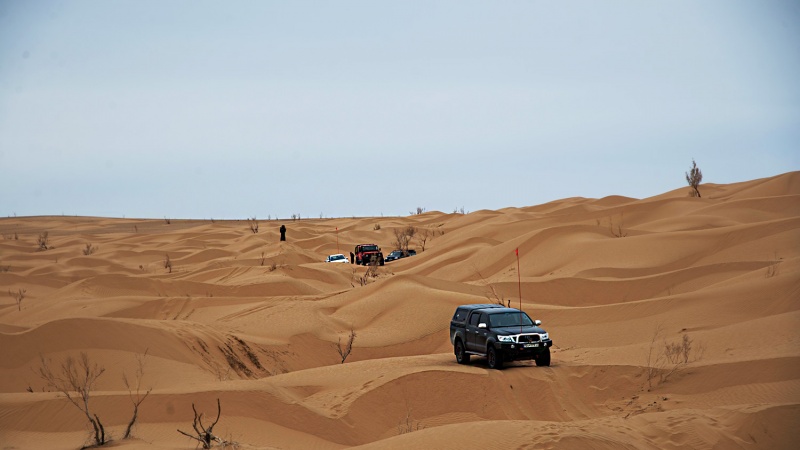Iran Press/Iran news: The Lut Desert, widely known as 'Dasht-e Lut' which literally means 'the empty desert', is a large salt desert located in the provinces of Kerman and Sistan and Baluchestan in southeastern Iran. It is the world's 27th-largest desert, and was inscribed on UNESCO's World Heritage List on 17 July 2016.
The aim of the conference is to first identify and discover the potentials of the region for attracting tourists from all over the world, and the second phase is to introduce, market, and convert tourist advantages into a tourism brand, Iran Press reported.
Measurements by NASA's Aqua satellite from 2003 to 2010 testify that the hottest land surface on Earth is located in Dasht-e Lut and land surface temperatures reach an incredible 70.7 °C (159.3 °F), though the air temperature is cooler. However, temperatures as high as 70 °C make Lut Desert one of the world's driest and hottest places.
 Desert Driving in Lut
Desert Driving in Lut
The hottest part of Dasht-e Lut is Gandom Beryan, a large plateau covered in dark lava, approximately 480 square kilometers in area. According to a local legend, the name (in translation from Persian — "Toasted wheat") originates from an accident where a load of wheat was left in the desert which was then scorched by the heat in a few days.
Lut Desert is located in the south-east of Iran. Between June and October, this arid subtropical area is swept by strong winds, which transport sediment and cause aeolian erosion on a colossal scale.
Iran's former ambassador to the 'United Nations Educational, Scientific and Cultural Organization' (UNESCO), 'Mohammad Reza Majidi' in the sideline of 'Meteorites of the Lut Desert and other parts of Iran' about importance of international conference on Lut Desert tourism in Birjand told Iran Press News Agency that 130 research paper from 11 countries across the world was presented to the conference and also officials from Spain, Italy, Malaysia, India and UNESCO will attend the Lut conference in Birjand. The first and largest exhibition of meteorites from the Lut Desert and other parts of Iran kick off from 28 April 2019 at the Golestan Palace World Heritage Site in Tehran.
The exhibition is organized by Unesco’s Lut Desert World Heritage Center, in association with the Golestan Palace World Heritage Center, and Hojjat Kamali who is a record holder for the discovery of meteorites and the only Iranian collector and museum owner of meteorites.
101/211/205
Read More:
Iran's Meteor exhibition opens in Tehran
Lorestan registers Kamancheh in UNESCO cultural heritage list
Hossein Vaez

